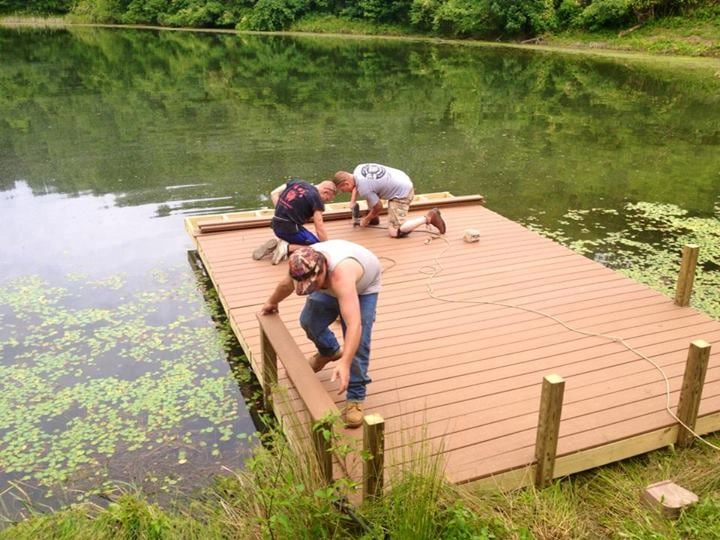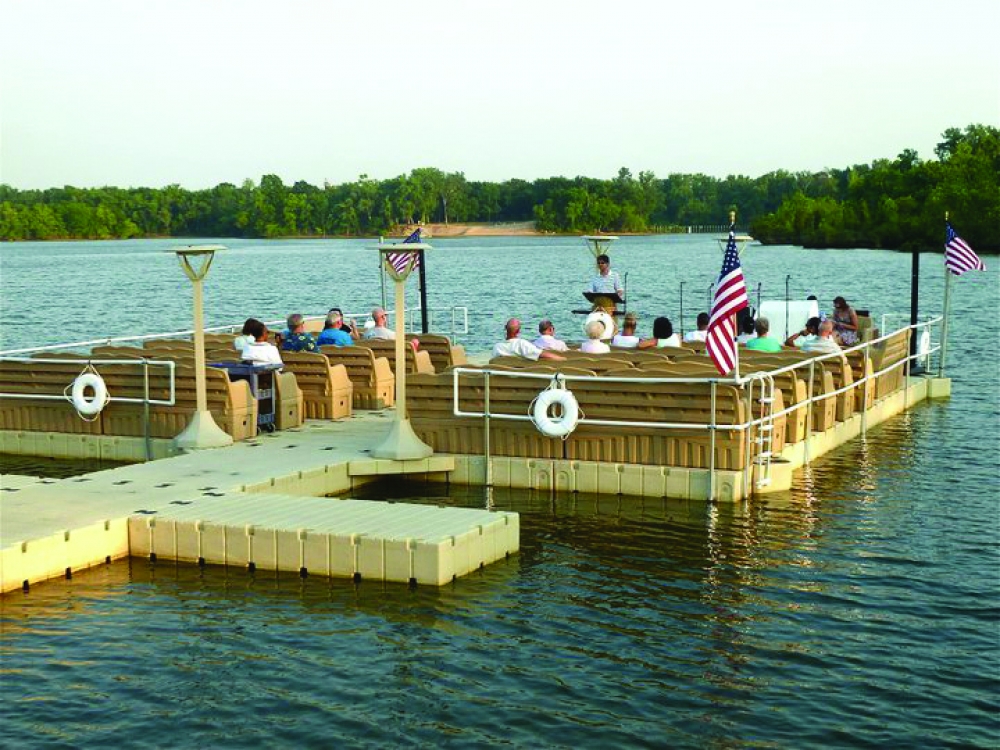Browsing the Options: Choosing the Right Dock Company for Your Floating Dock Job
Produce the Perfect Docking Service With Floating Docks
Floating docks present a versatile solution for a selection of maritime requirements, adapting perfectly to changing water degrees and diverse vessel kinds. As we explore the vital components that contribute to the efficiency of floating docks, several essential elements regarding security and maintenance will arise, raising inquiries regarding how to maximize your docking experience.

Advantages of Floating Docks
Floating docks deal many advantages that make them an optimal option for different maritime applications. Unlike repaired docks, floating docks surge and loss with the tide, ensuring constant availability for vessels.
Furthermore, floating docks are normally much easier and quicker to set up compared to typical set structures. Their modular design permits simple assembly and disassembly, facilitating upkeep and moving when essential. This versatility is especially beneficial for temporary applications or in settings where conditions might transform.
Floating docks also have a tendency to be more eco-friendly, as they lessen disruption to the seabed and bordering water communities. Their resilient nature decreases the threat of damage to aquatic life, promoting a much healthier atmosphere. These docks can be customized to suit different vessel sizes, ensuring that they fulfill specific functional needs.
Inevitably, the combination of versatility, ease of installment, and ecological considerations makes floating docks an extremely reliable service for a large range of maritime requirements.
Selecting the Right Materials
Selecting the proper products for floating docks is important to make certain toughness, security, and longevity. The choice of materials directly impacts the dock's performance in various environmental conditions, including exposure to water, sunlight, and prospective wear from marine web traffic.
Typical products made use of for floating docks consist of light weight aluminum, timber, and high-density polyethylene (HDPE) Aluminum is lightweight, corrosion-resistant, and calls for marginal upkeep, making it a superb selection for long life. Its first expense can be higher compared to other products.
Timber, while visually appealing and giving a traditional look, can be at risk to rot and pest damages if not correctly treated. Utilizing pressure-treated timber or normally durable varieties like cedar or redwood can alleviate these issues.
HDPE is a popular option because of its resistance to UV rays and chemicals, in addition to being eco-friendly. floating dock builder. It is light-weight and available in numerous colors, permitting modification
Eventually, the right product option will certainly depend upon specific demands, consisting of budget plan, wanted aesthetics, and ecological considerations. Cautious evaluation of these aspects will cause a successful and durable floating dock solution.
Style Factors To Consider for Stability
When developing floating docks, guaranteeing security is an essential aspect that can significantly impact their functionality and safety. Stability in floating dock style is influenced by numerous factors, including buoyancy, weight circulation, and the setup of parts. An optimum buoyancy system should utilize materials that supply enough lift while minimizing weight. This balance makes sure that the dock continues to be above water, also under differing loads.
Weight distribution is vital; uniformly distributing lots throughout the dock stops tilting and boosts security. Larger layouts can use boosted stability, particularly in rough water problems, while longer docks might need additional assistances to avoid sagging.
An additional essential factor to consider is the ecological impact, consisting of wave activity and wind. Incorporating attributes such as sidewalls or skirting can help Click This Link minimize the impacts of ecological pressures, maintaining security in damaging conditions. Inevitably, a combination of thoughtful style, material selection, and understanding of ecological factors will produce a floating dock that satisfies both stability and safety and security requirements.
Installment Tips and Techniques

Next, secure the necessary permits and stick to neighborhood regulations, which might determine setup techniques and environmental considerations. If required, involve a certified professional experienced in floating dock installations. Usage high-quality products created for marine environments to enhance durability and long life.
When placing the dock, align it alongside the coastline to help with easy accessibility. Make sure that the anchoring system is robust, employing cinder block or helical supports to support the dock against wind and wave activity. It's important to account for seasonal water level variations, consisting of possible ice movement in cooler climates.
Throughout the installation, verify the dock's floatation and security before finalizing the anchoring. Routinely evaluate the setup for any indications of wear or damage. By complying with these techniques and suggestions, you can achieve a safe and secure, functional, and cosmetically pleasing floating dock installment that meets your requirements.
Maintenance and Care Standards
Caring and maintaining for floating docks is important to extending their life expectancy and guaranteeing secure use. Regular evaluations must be performed to recognize any signs of wear, damage, or marine growth. Search for fractures, loose fittings, or tarnished locations on the dock's surface area, as these concerns can endanger architectural honesty.
Cleansing is important. Use a pressure washer to remove algae, barnacles, and debris, which can build up in time. For stubborn growth, consider eco-friendly cleaner that won't damage marine life.
Additionally, examine the mooring lines and supports often to guarantee they are complimentary and protected from rust. Replace any torn or harmed lines without delay to keep stability.
During extreme climate, such as tornados or freezing conditions, take precautionary actions. Safeguard the dock with extra mooring lines and, if possible, remove any kind of removable elements to avoid damages.
Verdict
To conclude, the application of floating docks provides a functional and efficient docking service suitable for numerous maritime applications. Their versatility to varying water levels, integrated with a modular design, permits for simple customization and moving. Selecting ideal products enhances both durability and aesthetic appeal, while mindful consideration of security guarantees safety and durability. With proper setup and regular maintenance, floating docks can give efficient and trustworthy docking experiences for a variety of vessels.
As we explore the necessary elements that contribute to the efficiency of floating docks, numerous key aspects pertaining to stability and maintenance will arise, elevating inquiries about how to enhance your docking experience. Unlike dealt with docks, floating docks surge and content fall with the tide, guaranteeing constant availability for vessels.When making floating docks, ensuring security is a fundamental aspect that can considerably impact their performance and security. Security in floating dock design is influenced by various elements, including buoyancy, weight distribution, and the arrangement of elements. Eventually, a combination of thoughtful design, material selection, and understanding of environmental factors will certainly generate a drifting dock that satisfies both stability and security requirements.